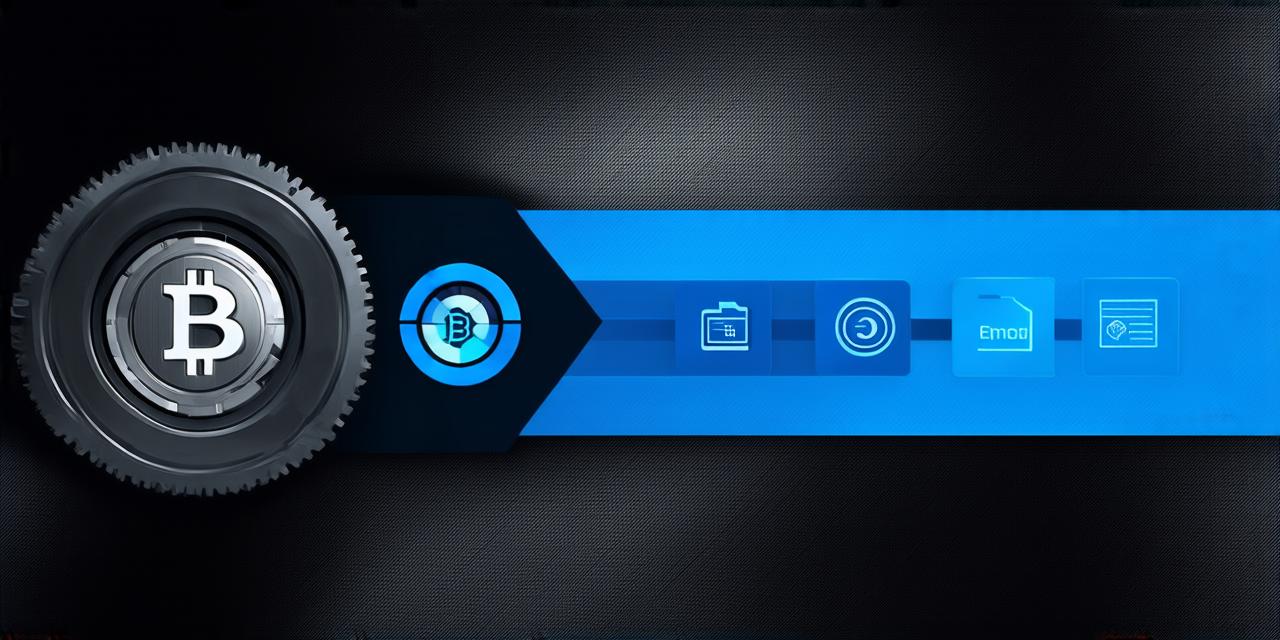Blockchain technology is revolutionizing industries worldwide, from finance and healthcare to supply chain management. However, the development of blockchain applications requires specialized knowledge of programming languages, cryptography, and distributed systems. This guide aims to provide a comprehensive overview of how to develop blockchain applications.
Introduction
Blockchain technology is a decentralized, secure, and transparent database that records transactions on multiple computers in a distributed network. Blockchain development involves creating smart contracts, deploying nodes, and securing the network through cryptography. This guide will provide an overview of the key steps involved in developing blockchain applications.
What are Smart Contracts?
Smart contracts are self-executing programs that run on the blockchain. They automate the enforcement of business rules and enable secure, transparent, and efficient exchange of value. Smart contracts can be written in programming languages such as Solidity for Ethereum, Vyper for Ethereum, or GoLang for Hyperledger Fabric.
What is a Blockchain Node?
A blockchain node is a computer that stores a copy of the blockchain and participates in the validation and verification of transactions. Nodes can be categorized as full nodes, which store the entire blockchain, and lightweight nodes, which only store a subset of the blockchain.
What is Cryptography?
Cryptography is the practice of secure communication in the presence of third parties. Blockchain applications use cryptographic techniques such as hashing, encryption, and digital signatures to ensure data security and integrity.
How do I Develop a Blockchain Application?
Developing a blockchain application involves several steps, including designing the architecture, writing smart contracts, deploying nodes, securing the network, and testing the application.
Designing the Architecture
The first step in developing a blockchain application is to design the architecture. This involves determining the type of blockchain platform, the consensus mechanism, the programming language used for smart contracts, and the node deployment strategy.
Writing Smart Contracts
Smart contracts are written in programming languages such as Solidity or GoLang. These languages have built-in support for cryptographic functions and can be easily integrated with other blockchain platforms. The code is then compiled into bytecode that runs on the blockchain.
Deploying Nodes
Once the smart contracts are written, the next step is to deploy nodes on a blockchain network. This involves setting up servers, configuring them to participate in the network, and distributing the node’s public key. The number of nodes required depends on the scalability requirements of the application.
Securing the Network
Blockchain networks are secured through cryptographic techniques such as hashing, encryption, and digital signatures. These techniques ensure data security, integrity, and privacy. Additionally, consensus mechanisms such as Proof of Work (PoW) or Proof of Stake (PoS) help to prevent double-spending and ensure that the network remains secure.
Testing the Application
Finally, it is important to test the application thoroughly before deploying it on a live network. This involves testing the smart contracts for functionality, testing the nodes for scalability and performance, and testing the security of the network against potential attacks.
Case Study: Ethereum Smart Contract Development
Ethereum is one of the most popular blockchain platforms used for developing decentralized applications (dApps). The following case study demonstrates how to develop an Ethereum smart contract.
Designing the Architecture
The first step in developing an Ethereum application is to design the architecture. This involves determining the type of smart contract, the programming language used for the smart contract, and the node deployment strategy. For this example, we will use Solidity to write a simple smart contract that allows users to send Ether (ETH) between accounts.
Writing Smart Contracts
The next step is to write the smart contract in Solidity. The following code demonstrates a simple smart contract for sending Ether between accounts:
solidity
pragma solidity ^0.8.0;

contract SimpleTransfer {
address public sender;
address public receiver;
uint256 public amount;
function send(address _sender, address _receiver, uint256 _amount) public {
sender = _sender;
receiver = _receiver;
amount = _amount;
require(msg.sender == sender, "Only the sender can call this function.");
require(sender != receiver, "Cannot send Ether to yourself.");
}
function transfer() public {
require(sender == message.sender, "Only the sender can call this function.");
require(amount > 0, "Amount must be greater than zero.");
require(balanceOf(sender) >= amount, "Insufficient balance.");
sender.transfer(amount);
receiver.transfer(amount);
}}
This smart contract allows users to send Ether between accounts by calling the send() function with the sender’s address, the receiver’s address, and the amount of Ether to be transferred. The transfer() function can be used to transfer Ether between
